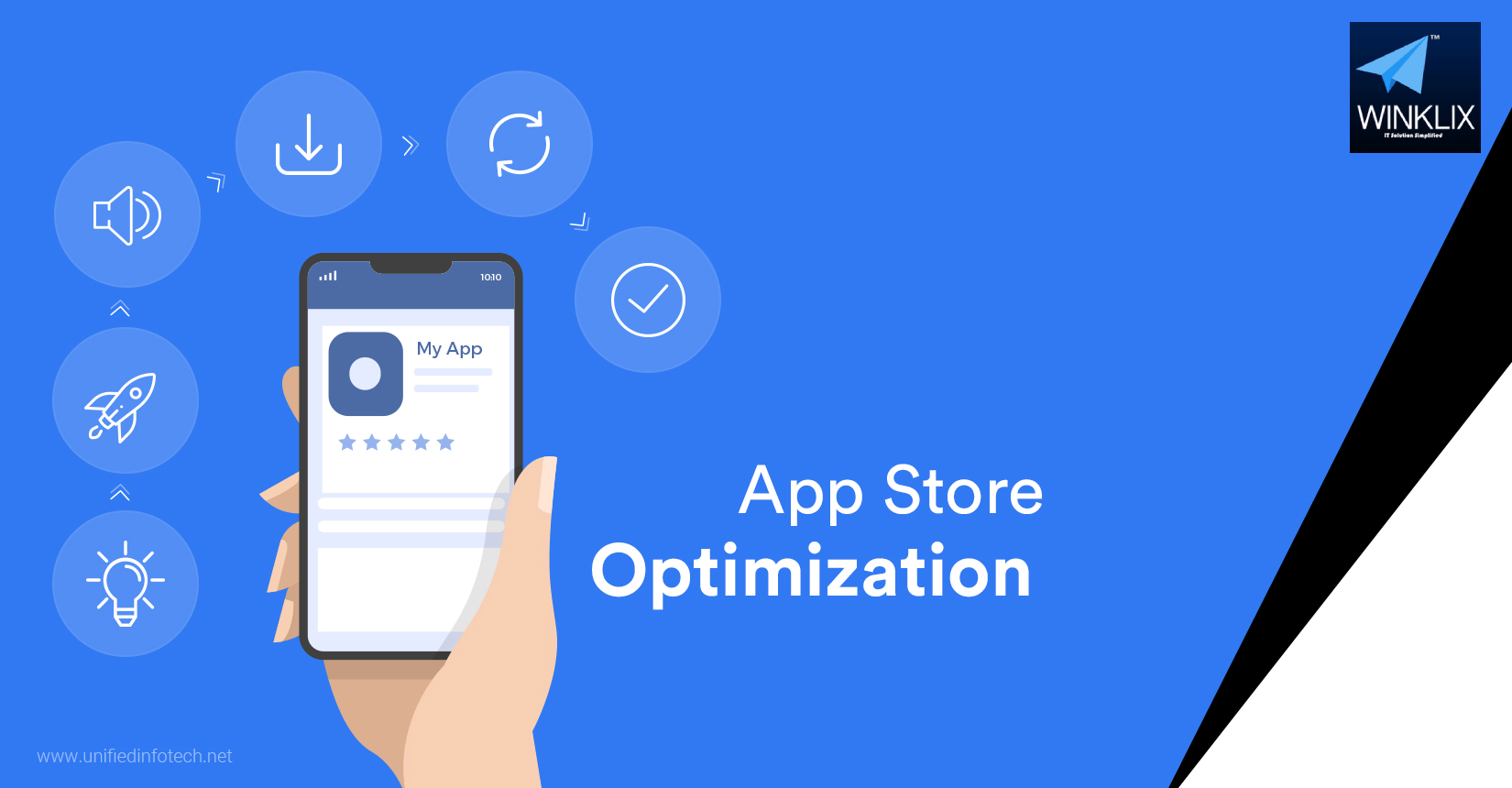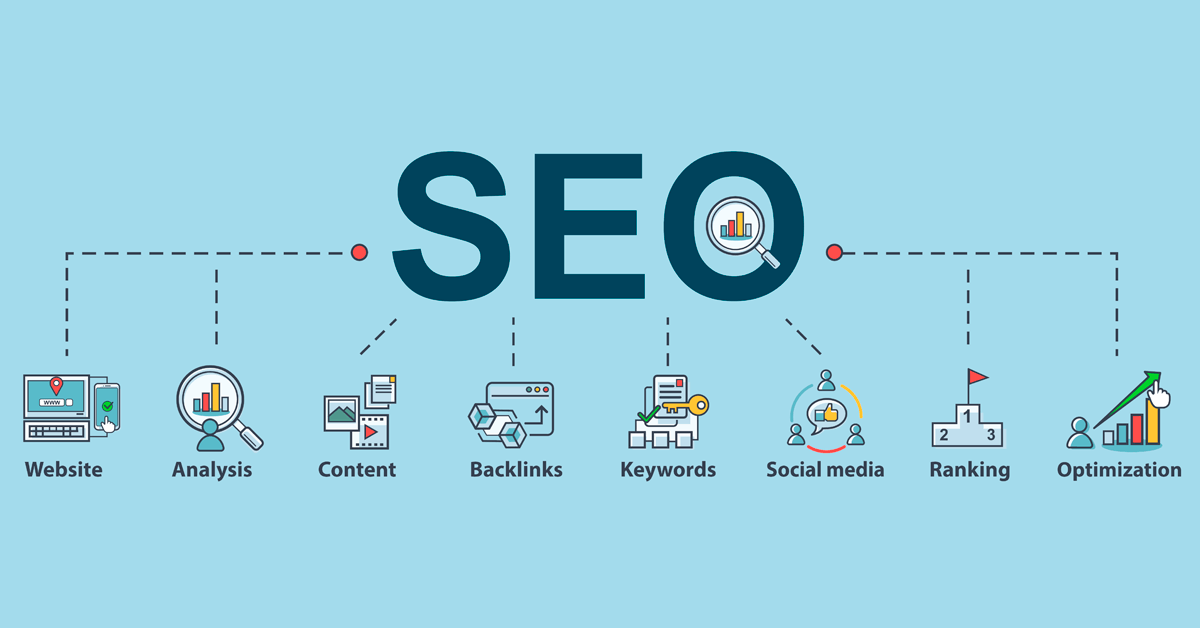There are billions of smartphone users around the world, and that number continues to grow year after year, creating a huge market for creating and buying apps. There are over four million apps on the Apple App Store and Google Play Store today, which means you have to be strategic about marketing your app if you want to generate mobile downloads and engagement. With over 6 million mobile apps in the major app stores, finding your app is one of the biggest problems facing mobile app publishers today. This is why understanding App Store Optimization (ASO) is so important. But what is App Store Optimization, and how can you make the most of it? Here’s what you need to know to help your app rank well.
App Store Optimization (ASO)
App store optimization is the process of optimizing mobile apps to rank higher in the App Store’s search results. The higher up your app in an app store’s search results, the more likely customers will see it. This increased visibility translates into more traffic to your app’s page in the App Store.
“The main goal of ASO is to drive as much traffic as possible to your app’s page in the App Store, so that searchers can take a specific action and lead to download your app.”
The ASO process also requires a critical understanding of your target customer base, which includes the keywords your potential customers use to find apps like yours. When you learn more about which keywords are being used, you will be able to better understand the language of your potential customers so that you can improve upon the best keywords to use.
Importance of ASO
According to Google, 40 percent of apps are found through App Store search. The search in the App Store is one of the most commonly used methods for finding and downloading new apps.
In other words, it means, “If you’re not using ASO to increase your app’s search rankings, you’re missing out on the biggest discovery channel available for your app.”
With hundreds of thousands of apps in each App Store competing to rank above each other, the reality is that most publishers aren’t investing in App Store optimization. So here we have tried to make ASO your secret weapon. Spend time improving your ASO every week, and you’ll be able to significantly impact your app’s ranking and overall success. What we’re about to explain is really the basics of SEO to help your app rank by SEO. If you’re already familiar with these for web searches, the App Store still has some important differences. Let’s discuss the various factors that can affect your App Store Optimization:
- Primary ASO Factor
These factors have the biggest impact on the rank of your app, so pay special attention to these factors. Under which the name / title of the app and keywords come. The keyword in the app name/title should be the keyword with the most search traffic. Spend time researching what that keyword is, as changing your title too often can be harmful. As your app starts to rank higher and gets more reviews, the news of your app will start spreading by mouth. Changing the title can make it difficult to spread the word about your app. Apart from this, Keywords to improve your search ranking you need to know which keywords are relevant and used most frequently by your target audience. Monitoring competitors is helpful to understand how you compare week to week. Apart from being the most important ASO factor, the title and keywords can be easily modified. That’s why you’ll want to optimize them regularly.
- Secondary ASO Factor
Actually, the first impression matters but there are many other factors that have a huge impact on whether users tap that download button. This includes The number of downloads you have is important to ASO, but you don’t have complete control over them. Ratings and reviews are also critical and difficult to control. However, there are ways to encourage happy users to rate and review. Here is a complete analysis of all the factors to keep in mind while optimizing your app for better ranking.
Focus Include Key ASO Factors
There are seven basic factors to ensure that your app is optimized for the App Store. Following these tips will help you effectively market your app, identify your top competitors, and take your app to the next level. These factors have the biggest impact on your app’s rank, so these factors need special attention:
- App Title
The title is our first impression online. This is what attracted you to read this post, and it is what will attract users to your app. Optimizing with a keyword in the title leads to a 10.3% increase in search rankings for that title. Obviously, some limitations apply, as the App Store is heavily regulated. You’re only given 30 characters for a title at Apple, and keyword stuffing is a surefire way to risk getting banned. Users are also wary of downloading shady looking apps for privacy concerns.
Think about it, would you have “Evernote” or “Taking Notes App for Notes” on your smartphone? Be smart about how you customize. Pandora, for example, does everything right. Its icon is sleek and simple, and with an acronym, it was able to fit in three essential keywords. When searching the App Store for “free,” “music,” or “radio,” you’ll find Pandora at or near the top.
- App Description
Here is where things get a little hazy. Technically the App Store ignores algorithmic details. However, users have a different story. Instead of optimizing for SEO, focus on explaining the features and benefits of your product. While it may seem like you have a lot of room to do this, you really don’t.
The truncated snippets are shown on your product page, and some readers can sometimes click “More” to read further than what you see here. You have 252 characters to make your pitch and to convince someone you’re worth downloading. so. You’ll want to keep it short and sweet. There’s no room for fluff, and you may need to A/B testing several iterations to find what works best.
- Keyword Metadata
Apple gives you 100 characters to enter a comma-separated keyword. These help your app find itself through search and related content. There’s no need for duplicating efforts here, so choose keywords that you haven’t already used in the title. Some in-depth keyword analysis can be done using Apple Search Ads. This feature is only available to iOS app developers and is an essential tool for listing any project. You can also use keyword research tools like Ubersuggest to find and test common keywords.
- App Subtitles
You are given a subtitle below the title in the search results. It’s also limited to 30 characters. This gives you another chance to use more descriptive keywords. TypeShift, for example, uses space to input its main search term. This is a cleaner look and can work well. I’d still take the opportunity to use some of the keywords in the title, but that’s out of my control. Which is a great debate for my next topic.
- App Reviews & Ratings
Customer reviews and ratings are an important consideration for users, especially those unfamiliar with an app brand. Apps with higher ratings are also ranked higher. This creates a difficult dilemma: You want more ratings and reviews, but not if they are negative. Therefore, you need a way to connect with your customers inside your app, giving them a place to hang out and talk directly to the developer.
On the other hand, you want to guide happy customers to leave positive reviews for you. Top 100 free apps in the App Store have an average rating of 4 stars. Quality clearly matters. The lower your rating, the fewer consumers will be willing to consider downloading it. Think about it. When was the last time you downloaded a One-Star App? You may have rated an app one star, but when you downloaded it, it was likely given three or more stars. Ratings also affect conversions.
It is often easier to maintain a high rating than to raise one out of two or four stars. That’s why it’s important to solicit reviews from customers within the app. One time is all that is needed, and it needs to be done within the first 72 hours. That is, 77% of users will use an app before never restarting it. It is also important to wait until the customer has had a chance to use the app. Instead of basing it on a timer, consider a push notification when the client completes some task. Examples of great times to do this are after the first level of the game or after a customer has sent their first message through your encrypted messaging app. However, try not to be too spammy, and be aware that your app’s performance may affect its rating.
Lastly, don’t hesitate to respond to negative reviews. It is possible that a poor customer experience was caused by an error or glitch that has since been fixed. Whenever possible, thank users for their reviews, good or bad, and bring up the right issues. This is your time to collect valuable user feedback. This is your time to collect valuable user feedback.
- App Download
Ultimately it’s the download that matters. An app preview videos and screenshots to help convert indecisive users. Both the app and the Google Play store use the number of times an app has been downloaded to determine ranking. More specifically, it is the current download rate. For example, while an app might have a million total downloads, a new app could beat it by getting more downloads this month. Preview video and images can be a major factor in this.
Most of the top apps in the App Store use app previews to increase customer conversions. Once you have a user, you’ll need to keep them. It’s harder than it sounds, and Apple is paying attention. Improving your app optimization is a great place to start. In addition, work on marketing your brand and app to improve recognition, awareness and appeal, from app store descriptions to images, ratings/reviews and social media presence.
Retention Impact on App Store Optimization
Retention rates are important for mobile device ranking, but the bar isn’t set too high. The average app only has a 29 percent retention rate after 90 days. Breaking things down further, we can look at the retention rates by industry. Media/Entertainment, Lifestyle/Travel and eCommerce/Retail apps have the best three-month retention rates. There are so many apps available in the App Store that users download a lot to never use them. One study found that Americans use an average of 30 apps each month, about 90 of which they installed.
This means that even if your app is downloaded, it is unlikely that it will ever be used after the first 72 hours. How long is your app installed and how often it is used during the install? This can help with App Store search rankings. Now that you understand how search rankings work, it’s time to explore the best practices for publishing to ensure that an app is viewed and downloaded.
Do apps with higher ratings rank higher in search results?
Yes, higher rankings result in higher search results. Here a test is performed by taking a random sample of keywords and classifying them on the basis of difficulty related to ranking. A “easy” keyword results in fewer than 25 apps trying to rank for that keyword. “Medium” keywords are included in 25-100 apps, and “competitive” keywords are those that are in 100+ apps. Based on this test, there is a clear trend showing that apps with higher ratings also rank higher for keyword difficulty. Apps with better ratings rank higher.
App Store Optimization FAQ
What is the most important thing I can do to optimize my App Store listing?
The most important thing you can do to optimize your App Store listing is to research and use the best keywords to reach the target audience for your app.
What does it mean to customize my App Store listing?
Optimizing your App Store listing will help your app appear in search results for most users looking for apps that work like you.
How do I systematically increase my app’s downloads?
Optimize your listing through keyword research, choose catchy title names for your apps, ensure quick download speeds and great UX, run social media campaigns to get people talking about your app, and more.
How much can you earn from an app?
It totally depends on how much you charge for your app, its quality, its competition, its advertising experience etc.
Conclusion
Like SEO, ASO is a process that needs to be tracked and constantly changed over time. Your optimal set of keywords is rarely the set you choose to put in the App Store first. In most cases, there is little or no research on keyword searches prior to app submission, leaving most apps hidden, and the chances of discovery quite low. To reap the rewards of ASO, you need to put in the time and effort. If you do this, you will have a consistent channel driving traffic to your app. Being found is one of the most difficult challenges for mobile apps, but it is a problem that you can actively solve with the suggestions above.




